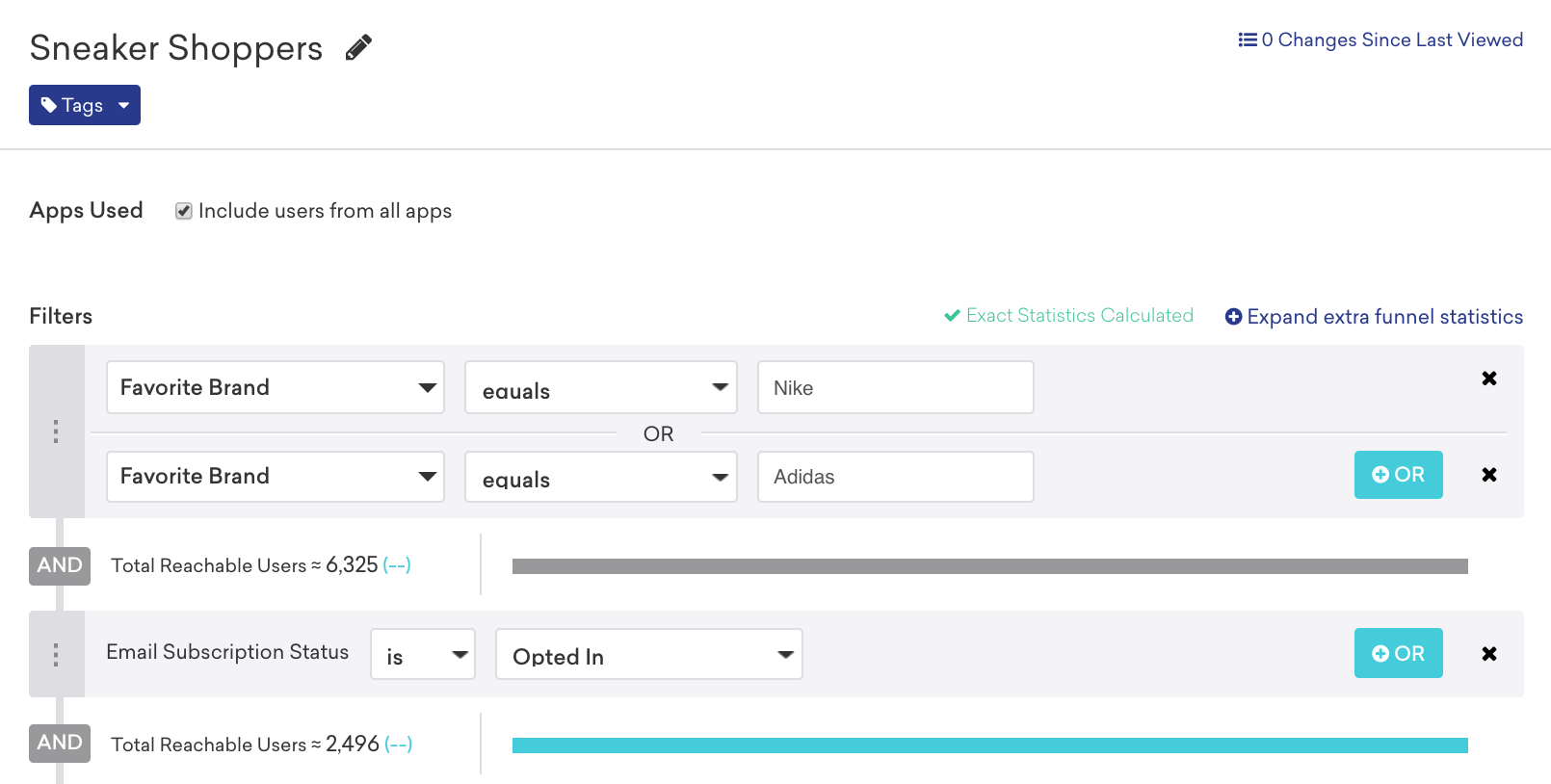Segmentation logic
The AND and OR operators enable powerful filtering when creating a segment. Using these operators, you can target your users based on their actions or behaviors in the Target Audience step of building your campaigns or Canvases.
Understanding the AND and OR operators
The AND and OR operators function in different ways. You can use each operator depending on what you want to achieve when segmenting your audience.
When to use the AND operator
In general, use AND if you’re interested in the intersection of two or more values for a particular attribute.
Let’s consider how to target users in a campaign from every country except for Canada and the United States. In this case, using the AND operator can help filter these users. The statement Country is not United States AND Country is not Canada will only include users who are not from the United States and who are not from Canada. So, by using this logic, both users in Canada and the United States will be excluded.
When to use the OR operator
Use OR if your goal is to target users who meet at least one condition in a set of conditions. If you have three conditions linked together by OR, then one, two, or all of the conditions can be true in order for the actual statement to be true.
For example, imagine that you want to send a message to all your users on version 1.0 or 1.1 of your app. In order to target the users that are on version 1.0 and on version 1.1, you can use the filters Is 1.0 and Is 1.1 with the OR operator in your segment. This will target all users who are on versions 1.0 or 1.1.
In this next example, consider a promotion that is valid for both users in the United States and Canadian. You want to make sure that only users in areas where the promotion is valid receive the promotion. In this scenario, use the following statement to target your campaign: Country is United States OR Country is Canada. With the OR operator, your campaign would only go to users whose country is Canada or whose country is United States.
When to avoid the OR operator
There can be user targeting situations where using the OR operator should be avoided. The OR operator creates a statement that evaluates to true if a user meets the criteria for one or more of the filters in a statement. For example, if you want to create a segment of users who belong to “foodies” but do not belong to either “non-foodies” or “candy-lovers”, then using the OR operator would work here.

However, if your goal is to segment users who belong to the “foodies” segment and are not in either of the “non-foodies” and “candy-lovers” segments, then use the AND operator. This way, users who receive the campaign or Canvas are in the intended segment (“foodies”) and not in the other segments (“non-foodies” and “candy-lovers”) at the same time.
The following negative targeting criteria should not be used with the OR operator when two or more filters are referencing the same attribute:
is notdoes not equaldoes not match regex
If is not, does not equal, or does not match regex are used with the OR operator two or more times in a statement, users with all values for the relevant attribute will be targeted.
Using both operators
In this next example, we’ll use both AND and OR operators. Here, the target audience includes users who purchased Nike sneakers or Adidas sneakers, and are opted in to receive email notifications.

Another way to ensure you’re building the right logic is to create your segment and preview the users who are falling into it based on your filters. This way you can make sure that their attributes, app version, or any other segmentation matches what you are seeing.
Still need help? Open a support ticket.
Last updated on June 3, 2022
 Edit this page on GitHub
Edit this page on GitHub